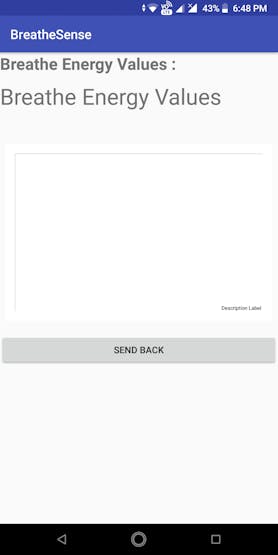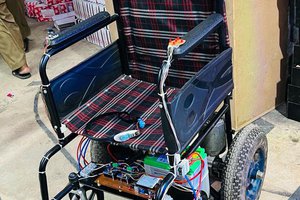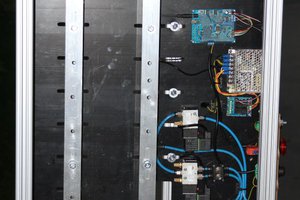Introduction:
BreatheSense is a‘Breathe-to-Speech’ assistive device which converts an individuals breathe data into speech. This system works on a sensor called ‘Walabot’, which is manufactured by Vayyar Imaging Ltd. This is a 3D imaging sensor, which is embedded with 15 high accuracy Radio Frequency antennas. Its primary function is in-wall imaging, but due to these RF antennas, it can even detect the slightest of movements, like thumping of the human heart, or the movement of diaphragm.So, this enables it to perform the functions of Heartbeat Sensing and Breathe Sensing. I have used the Walabot Creator for my system, hence all the explanation will be with respect to the Walabot creator model.

Now, the walabot sensor will give the breath readings in terms of ‘energy’, which are in the order of 10^-5, which is due to the micro movements of our diaphragm moves. Now, these readings are plotted, analysed by a python program written by me, which converts them into text messages for a particular sequence of breath data, and sends it to the android app, which speaks it out loud (speech).
To explain the analysis process in simple terms, consider the following:
L – Long Breath
S – Short Breath
Now, let’s consider 4 cases for simplicity:
SS– 2 short breath
SL– short breath followed by long breath
LS– long breath followed by short breath
LL– 2 long breath
Now, each of these combination will represent a particular sentence or block of text, like “I need Help”, “I need Food”, and other simple sentences that a disabled person would need for a casual conversation. Now these sentences are sent to the android app, which will convert this into speech by speaking them our loud for the normal person to hear.
Detailed Explanation:
To understand every detail of the system, we will divide it into certain parts, which is shown by the flow diagram, giving a detailed explanation on how the system actually works.

Go through the detailed step by step instructions on how to build this project in the instructions section of this project.
Conclusion:
After conducting research on this project, building a prototype and experiment it with actual disabled people, the response was quite phenomenal. The people using this system were having a success rate of almost 70% with my prototype, which was only designed for 8 sentences, which is quite good for a first try.
This technology has a lot of future scope, and my research would help a lot of bright minds into developing something much better than this, which would help with the goal of achieving a society in which disabled people can live without any bias, and are viewed as normal people.
Future Scope:
· The system dimensions can be reduced a lot by using a Card sized computer like the Raspberry Pi, which would make the system not only compact, but portable too, as these computers can be easily powered by a Battery bank.
· The system cost can be decreased by using an alternative for the Walabot sensor, which is currently priced at 150 dollars, which is quite expensive. Do note that this is just used for prototyping.
Here I have added a video showing a plotting demo using Python.
Please do support this project as it could change the lives of thousands of people by providing them the technology required to make their lives easier.
 Dhairya Parikh
Dhairya Parikh





 Dr Andy Woods
Dr Andy Woods
 M.Dawood
M.Dawood
 Adam Wiesler
Adam Wiesler
I guess patient associations could help you in several ways. For example https://als.ca